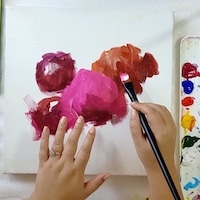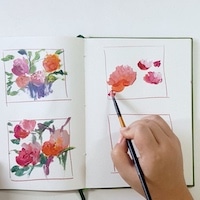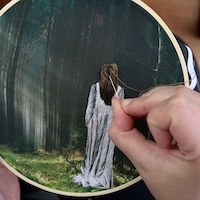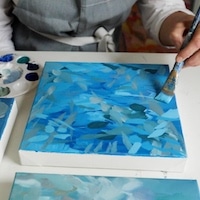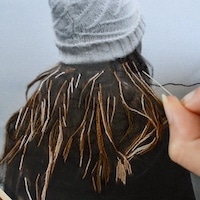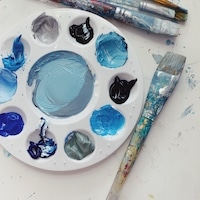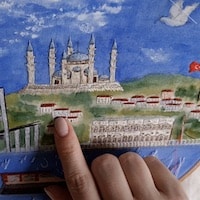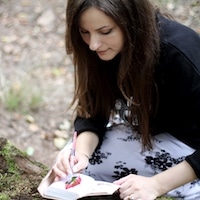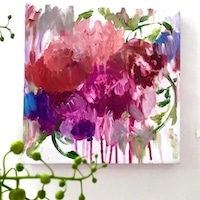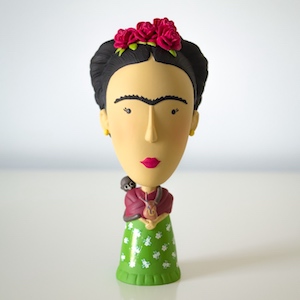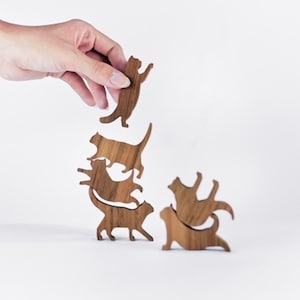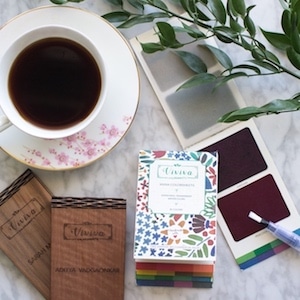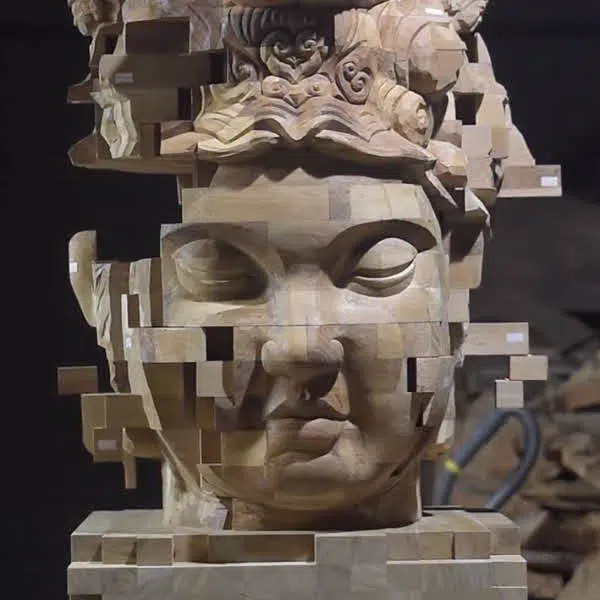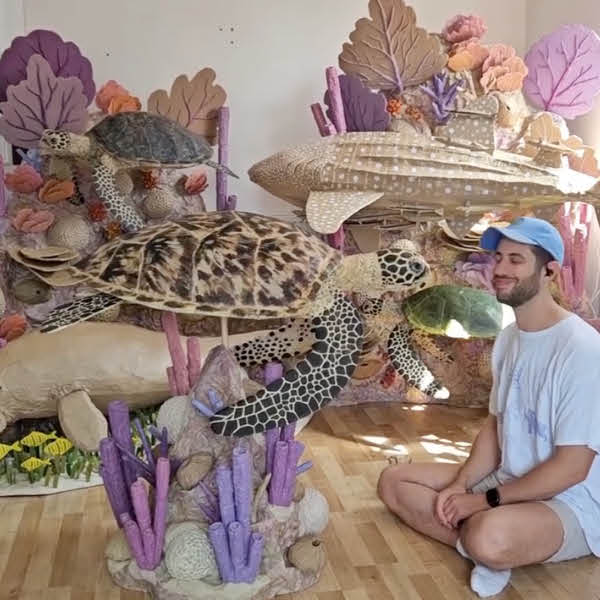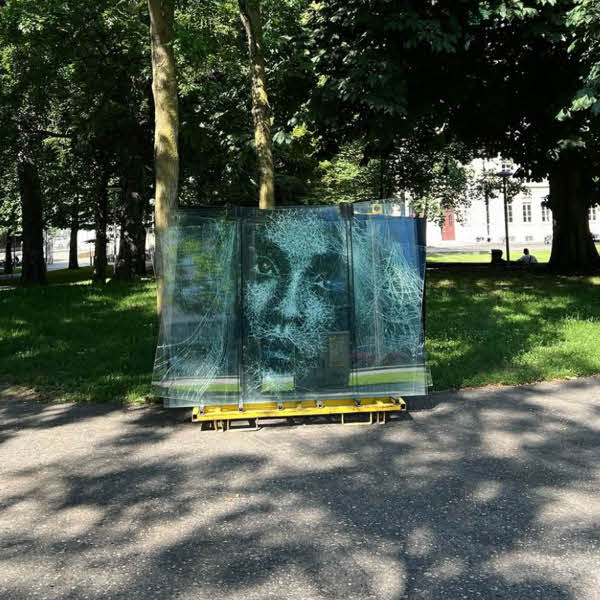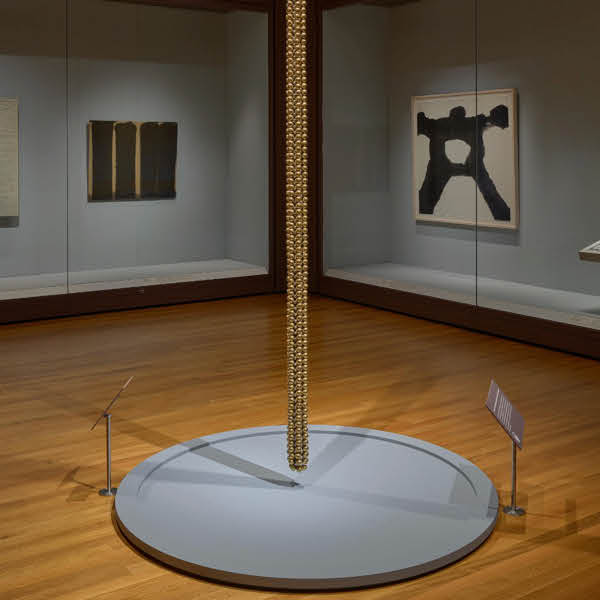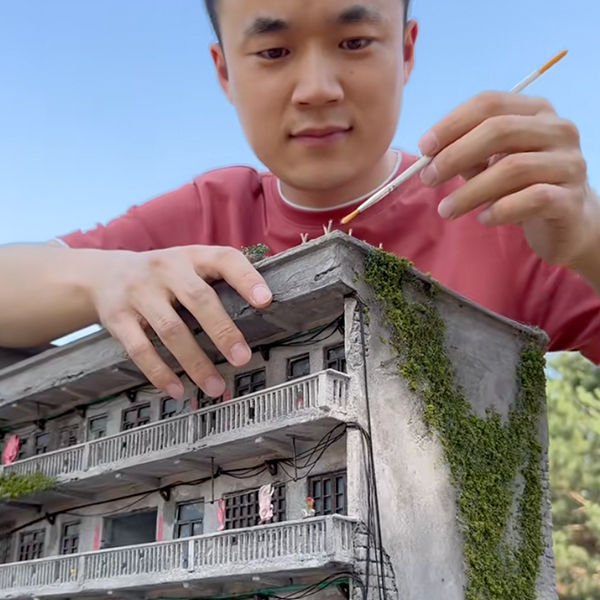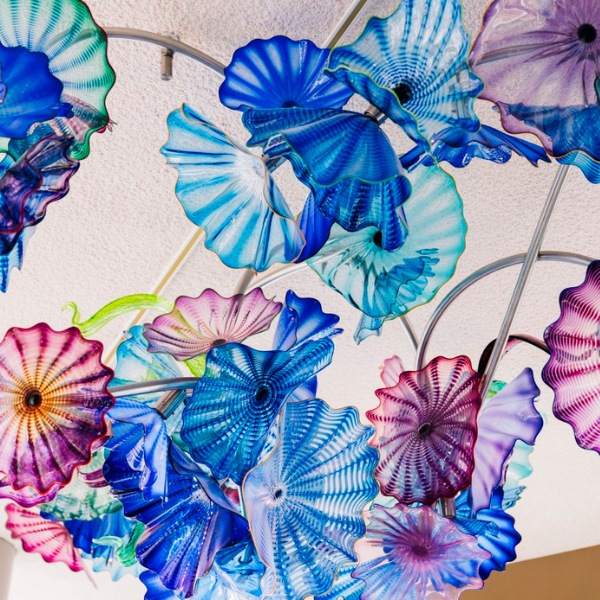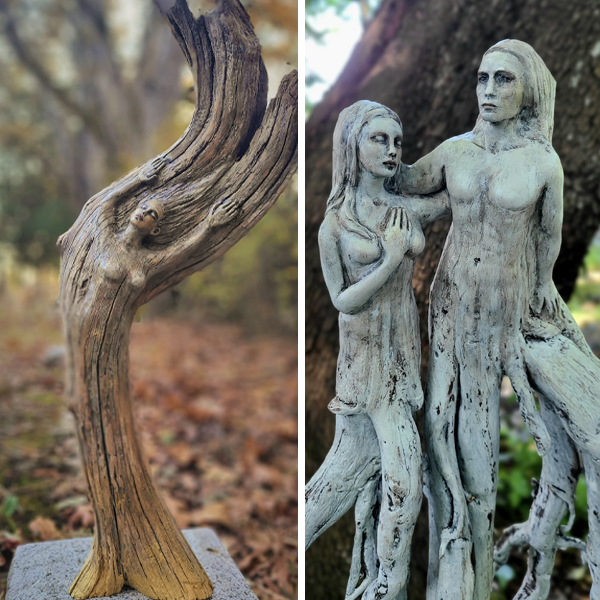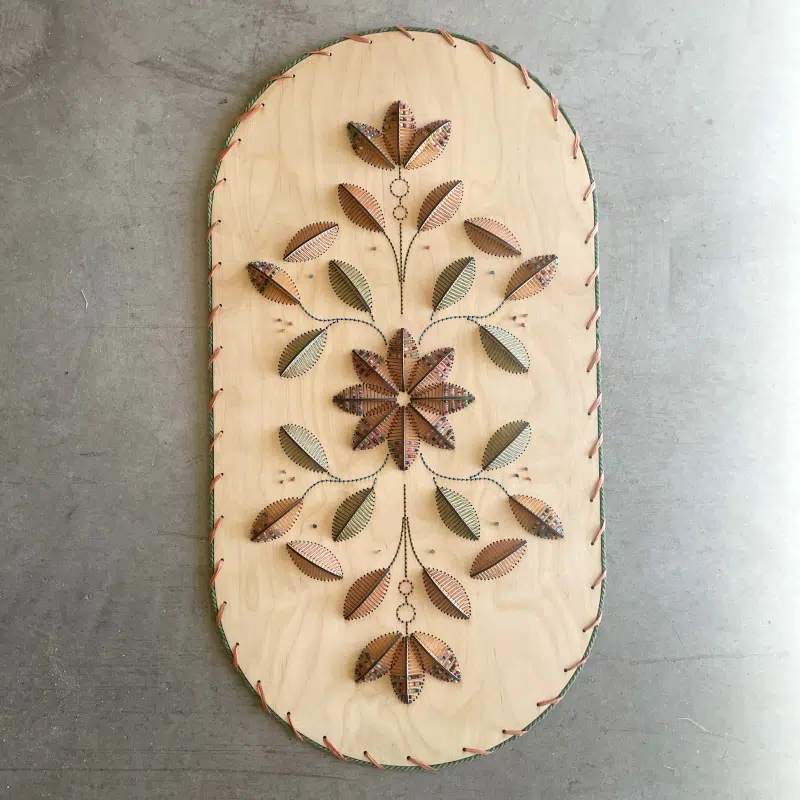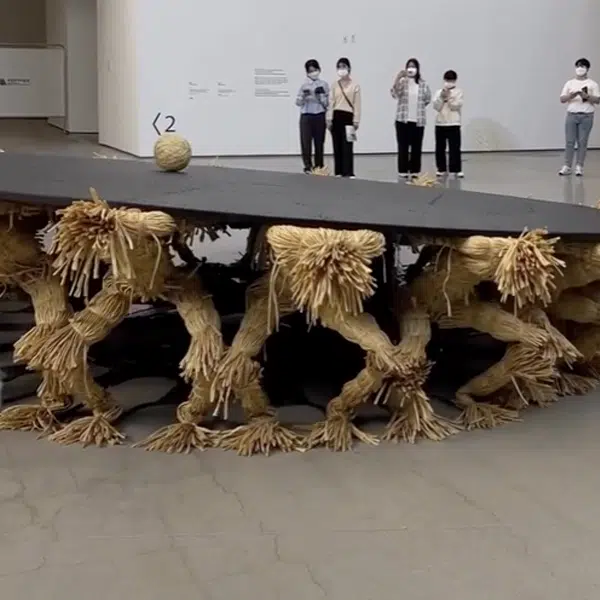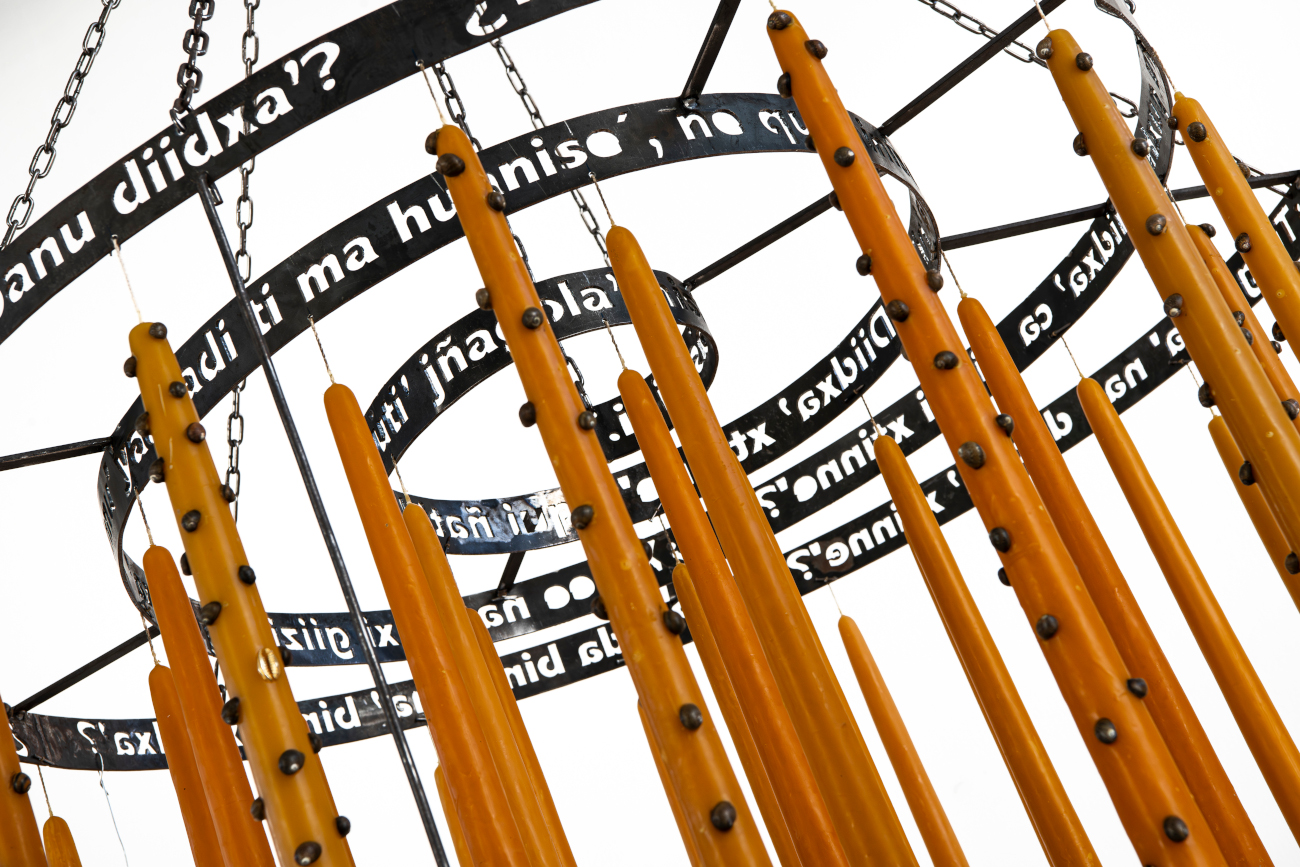
Details of “La Manda”
There are 68 languages spoken throughout Mexico; most of them are Indigenous. Many of these languages are now endangered, as few speakers of them continue to age and there are scarce resources to teach them to new generations. Aware that each language contains a world of its own, artist Ana Hernández is making a plea for their survival with a touching piece titled La Manda.
In Mexican culture, particularly in the Catholic circles, a manda is an act of faith. A person in need vows to fulfill a promise—whether it's making a pilgrimage, performing an act of service, or sacrificing an offering. In Hernández's manda, the artist prays for these languages; for the memory of those gone extinct, for the endurance of those spoken today, and the perseverance of those that will continue to be spoken for generations to come.
La Manda, which made its debut at Zona Maco 2025, is made up of two metal spirals that hang from a chain attached to the ceiling, evoking a chandelier. In these metallic swirls, the artist has engraved a manifest regarding these endangered languages in Zapotec—a family of languages spoken mostly in the state of Oaxaca, where Hernández hails from. In the snail-like structure, the artist asks questions such as: Who took my language away?; How many have lost their language?; and What road is there for us if we don't have a language?; before ending with a hopeful statement—My language didn't die with my grandmother. It is only asleep.
From these metal “ribbons,” 68 yellow-orange candles decorated with tiny seashells—one for each language—hang by their wicks. The shell motif plays a key role in the piece due to its multiple meanings. In ancient Aztec codes, the spoken word was depicted as speech bubbles with a coiled end, becoming a symbol of communication. For Hernández, the swirls in the shell also depicts an infinite labyrinth, imagining an endless path for these languages.
The candles also carry a message of community, a key part in making these languages thrive. The candles pay tribute to the “labrada de cera” (sculpting of wax), a local ritual in which people gather to make the candles to be used for different celebrations. The use of naturally sourced materials, such as bee wax, sea shells, and thread from organic fibers, also speaks to the vulnerability of the natural world—and how it's not just languages that are at stake.
“The being is constructed from language; by losing the worlds contained in each word, constitutive elements of peoples, cultures, and communities are extinguished,” reads Hernández's artist statement.
To stay up to date with her work, follow Ana Hernández on Instagram.
Mexican artist Ana Hernández makes a plea for the survival of endangered Indigenous languages in a touching piece titled La Manda.
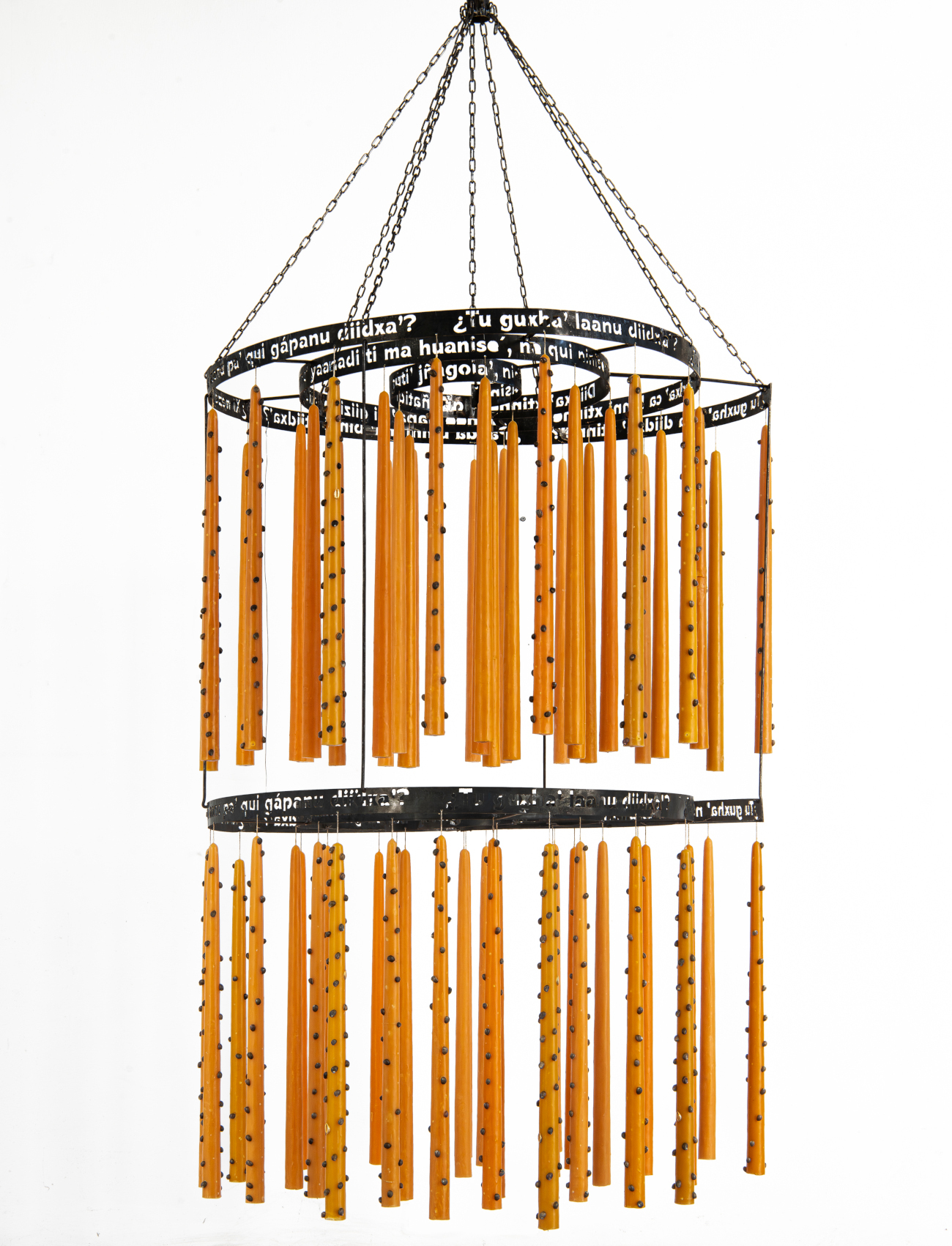
“La Manda”
In Mexican culture, particularly in the Catholic circles, a manda is an act of faith. A person in need vows to fulfill a promise, whether it's making a pilgrimage, performing an act of service, or sacrificing an offering.
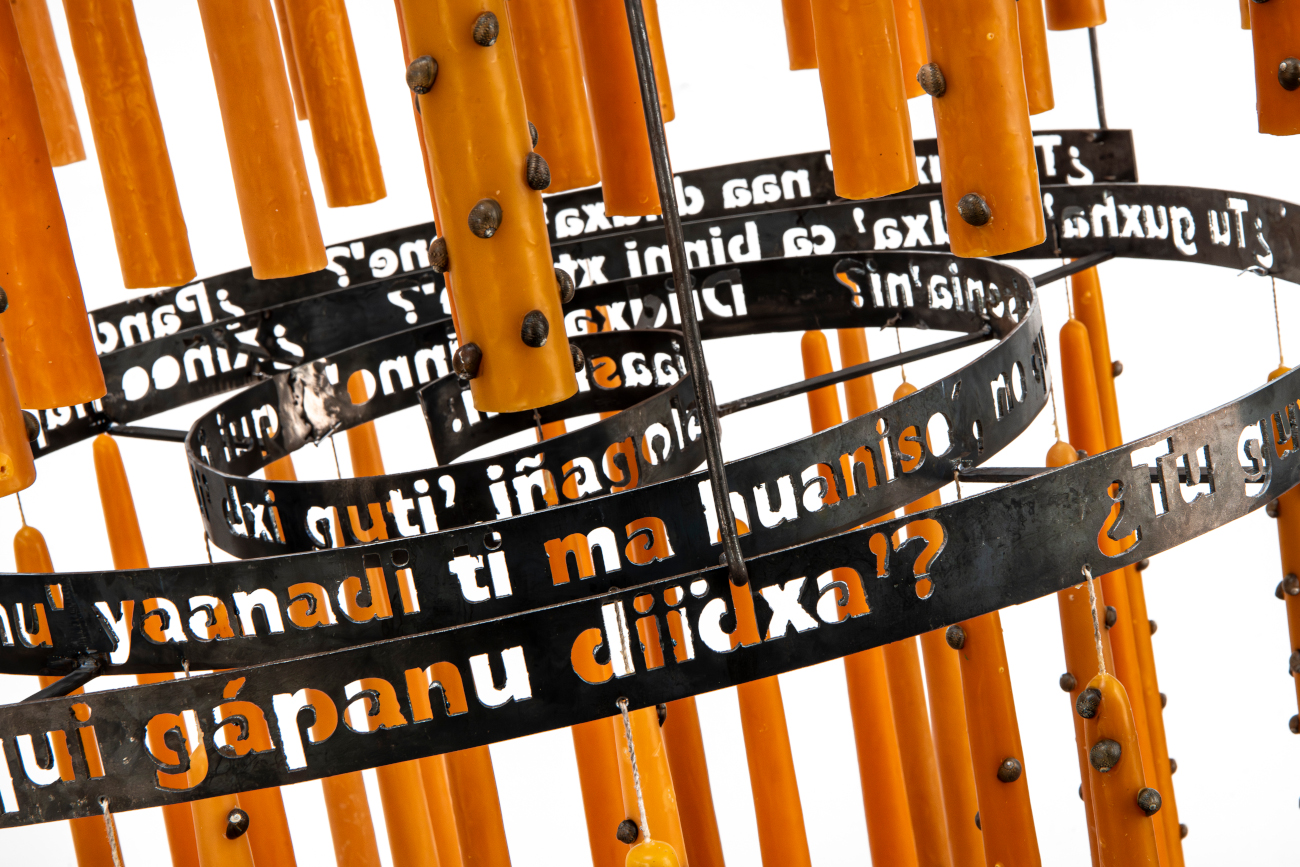
Details of “La Manda”
In Hernández's manda, the artist prays for these languages; for the memory of those gone extinct, for the endurance of those spoken today, and the perseverance of those that will continue to be spoken for generations to come.
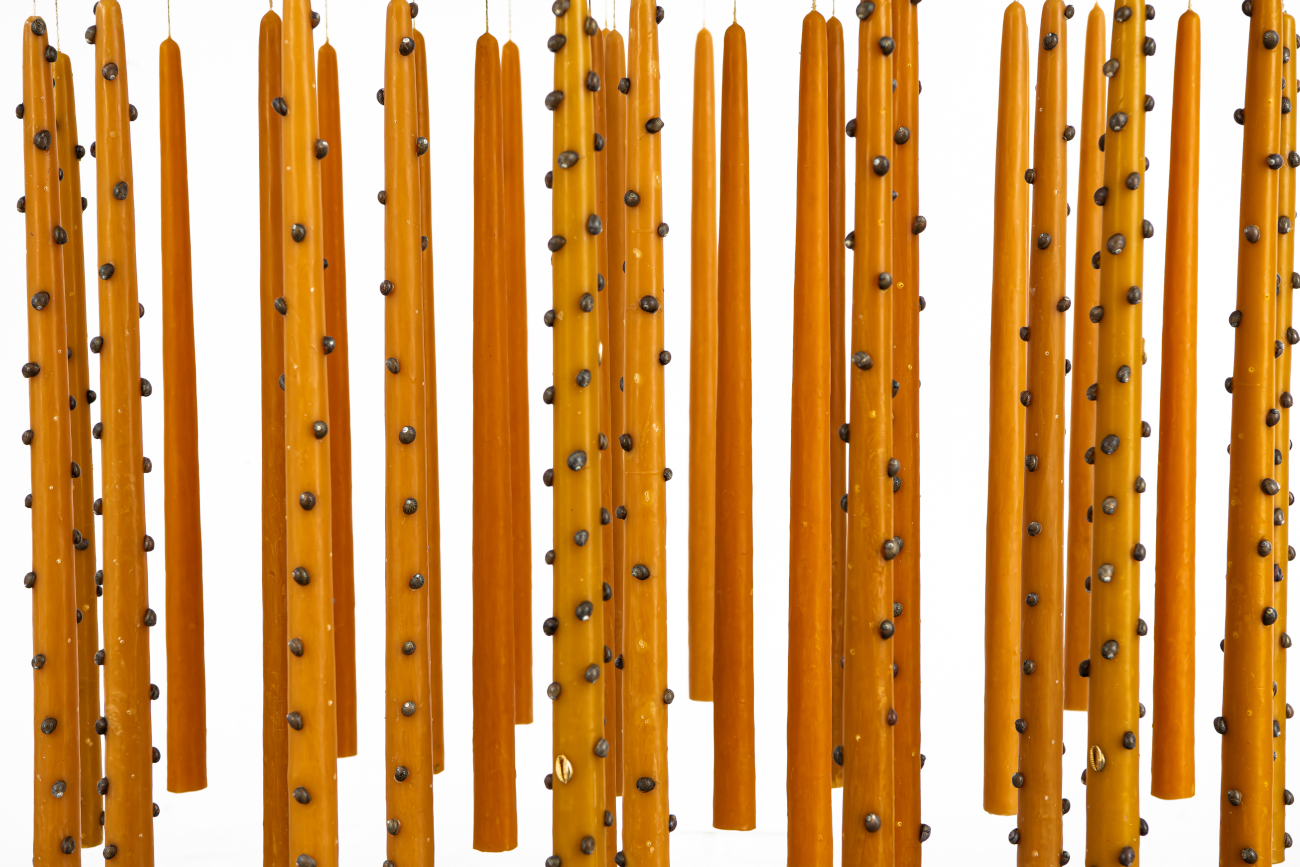
Details of “La Manda”
La Manda is made up of two metal spirals, where the artist has engraved a manifest in Zapotec—a family of languages spoken mostly in the state of Oaxaca, where Hernández hails from.
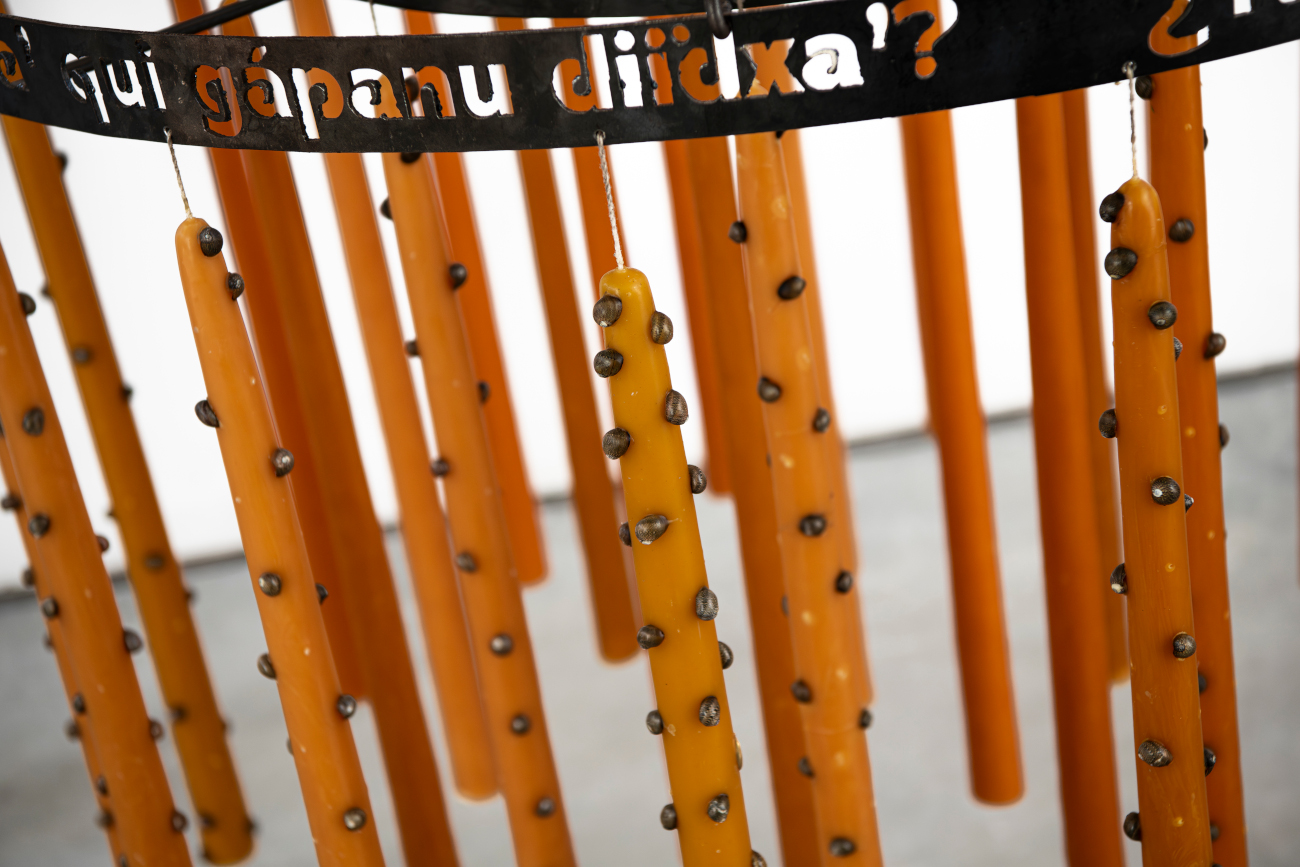
Details of “La Manda”
From these metal “ribbons,” 68 yellow-orange candles decorated with tiny seashells—one for each language spoken in Mexico—hang by their wicks.
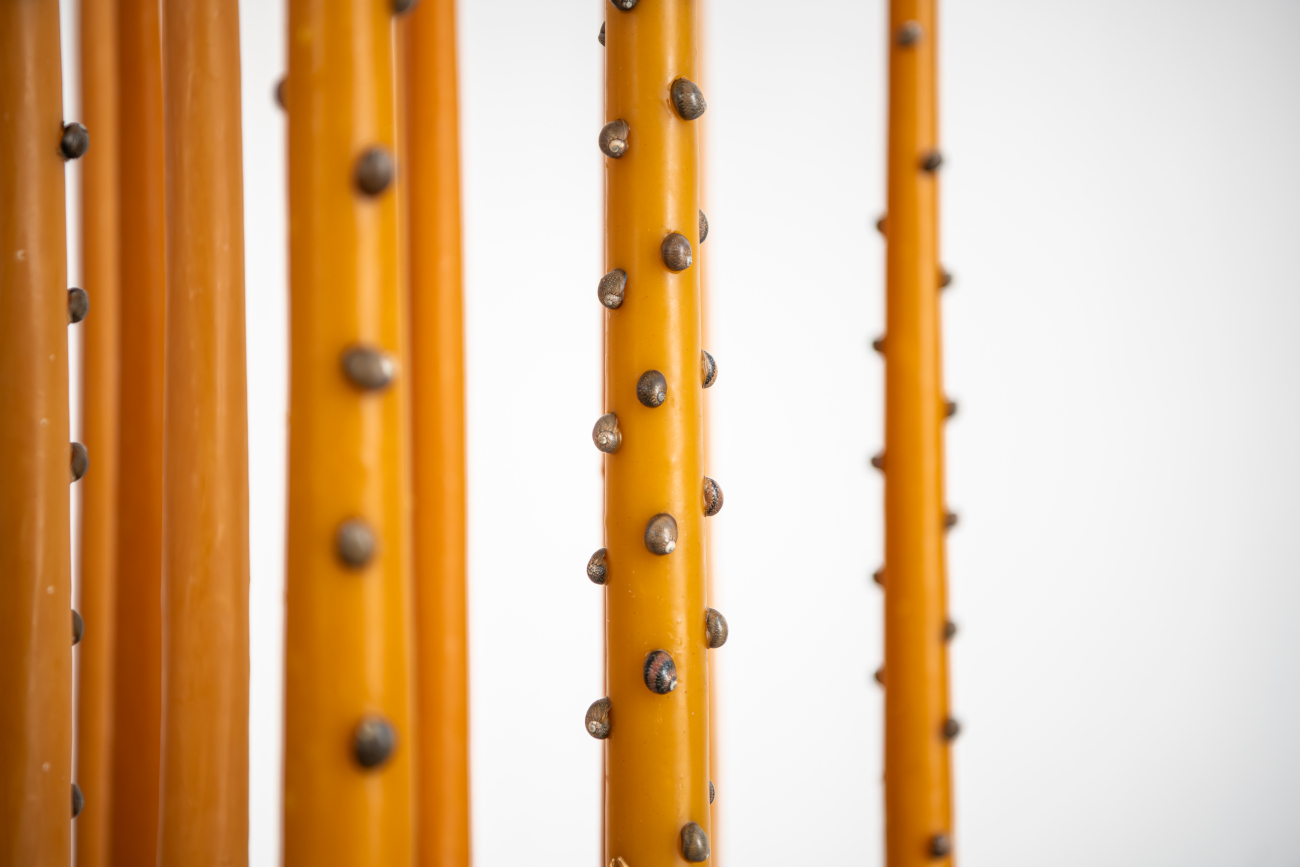
Details of “La Manda”
“The being is constructed from language; by losing the worlds contained in each word, constitutive elements of peoples, cultures, and communities are extinguished.”
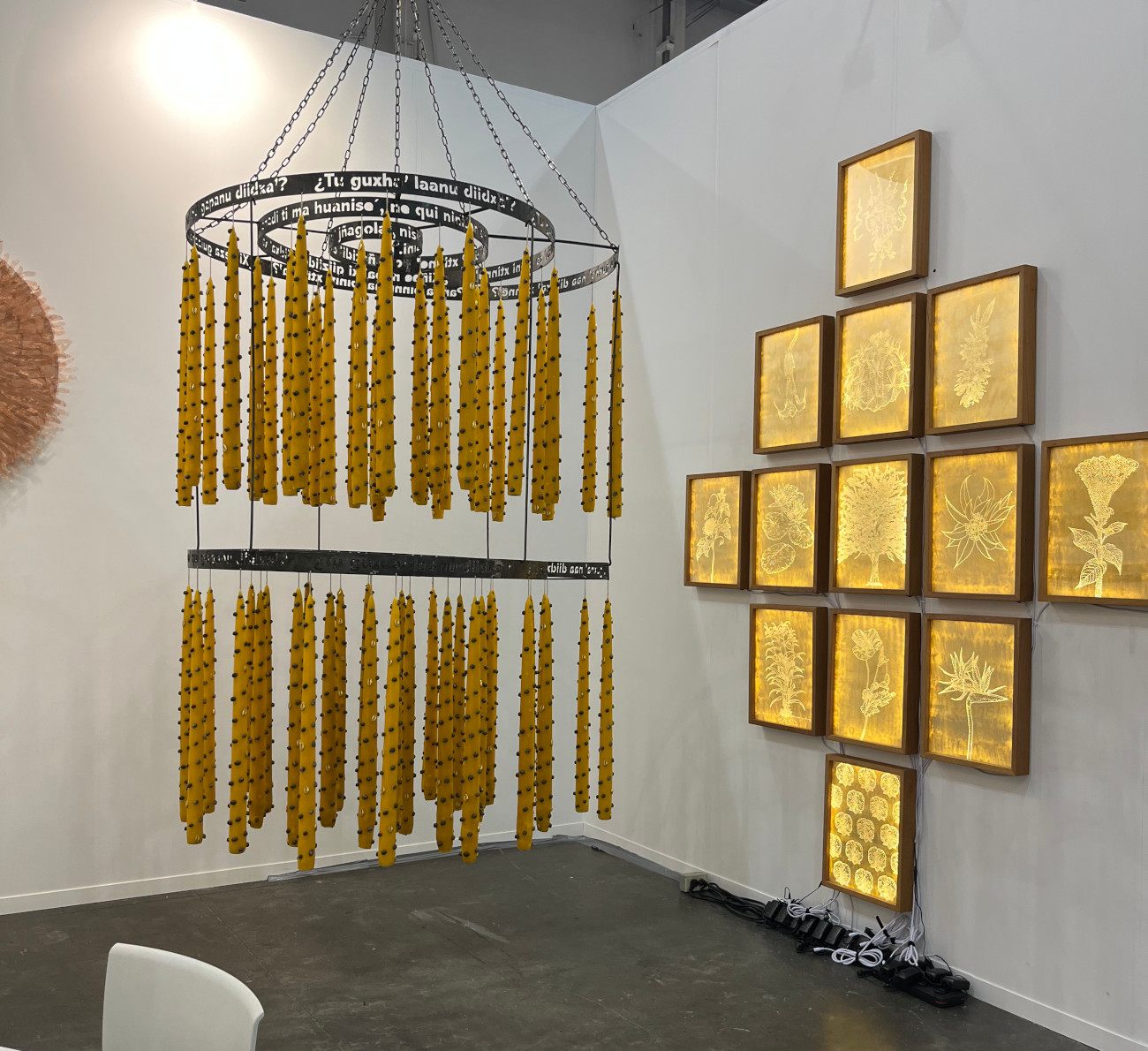
“La Manda” at Zona Maco

